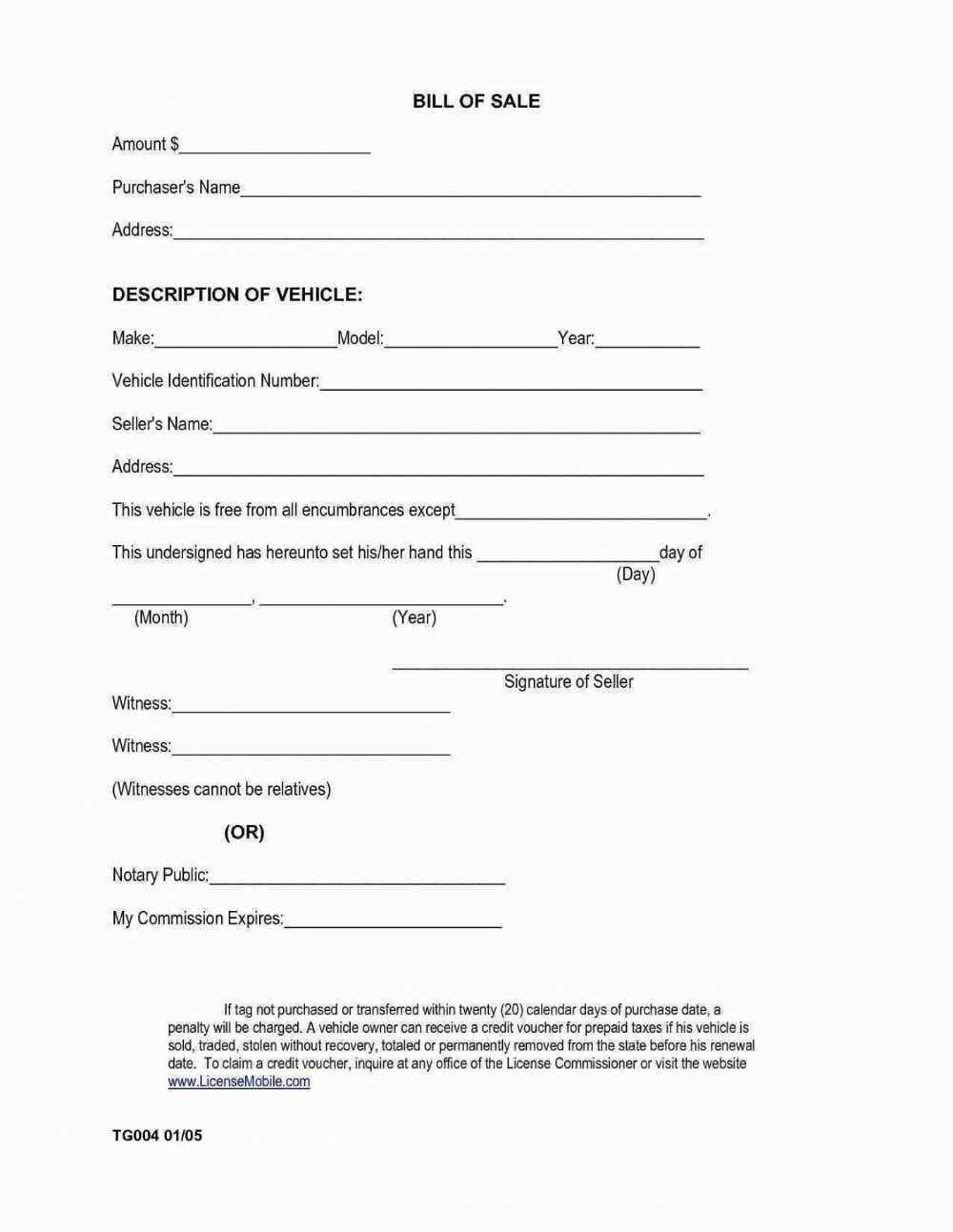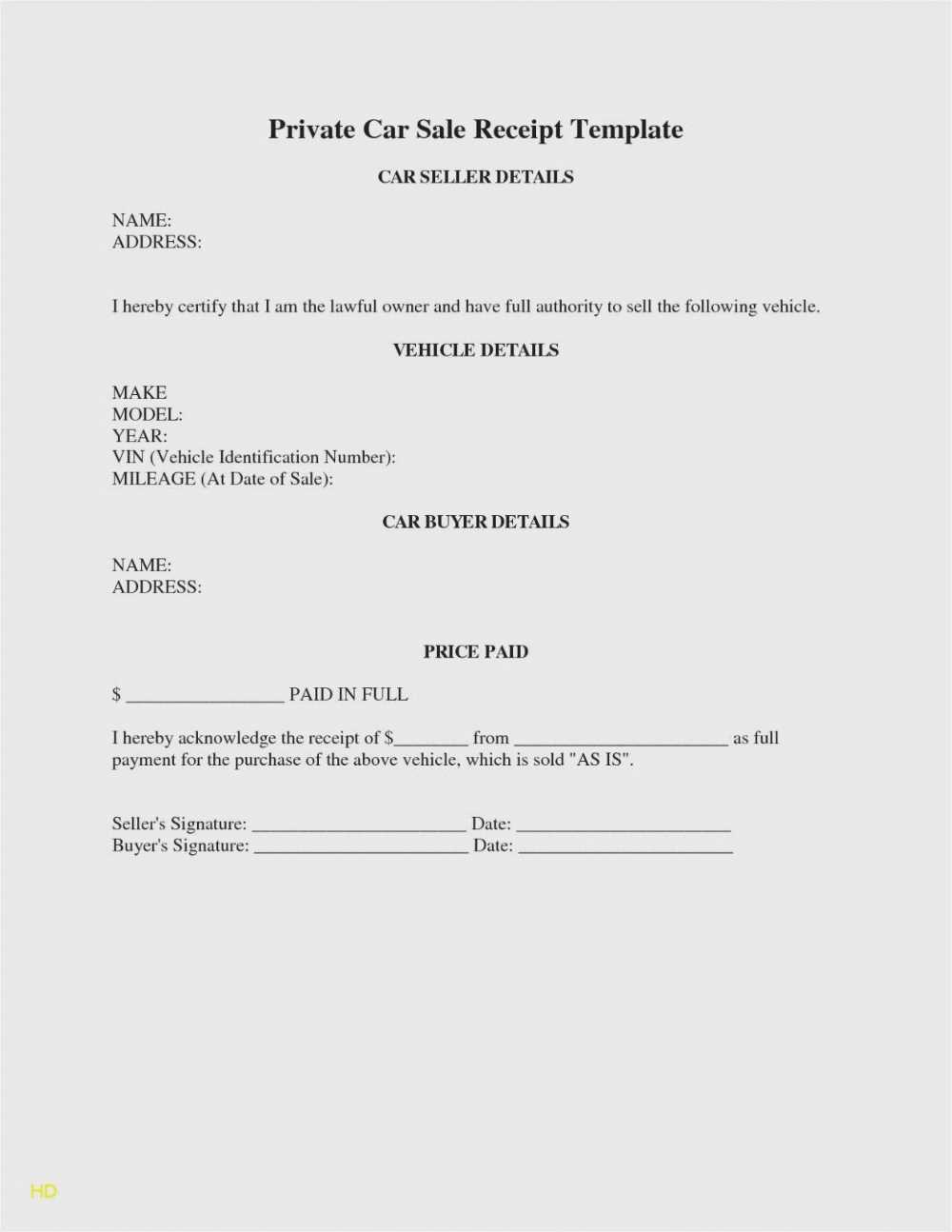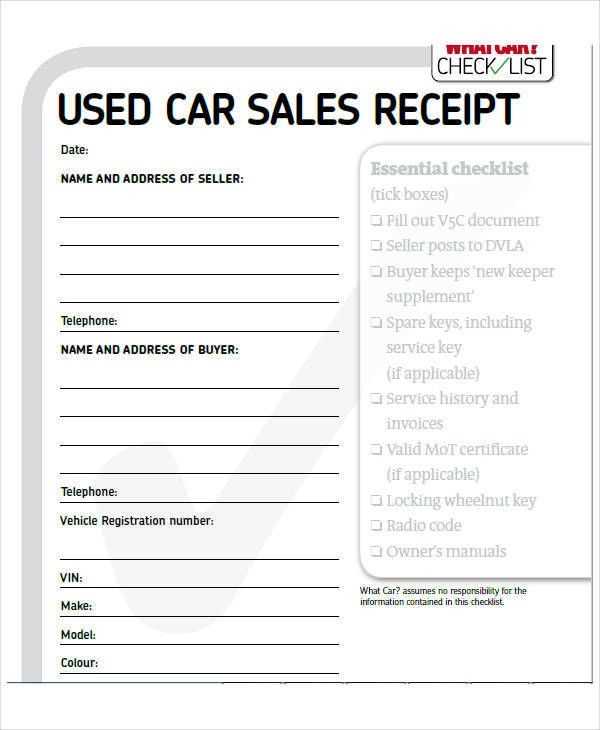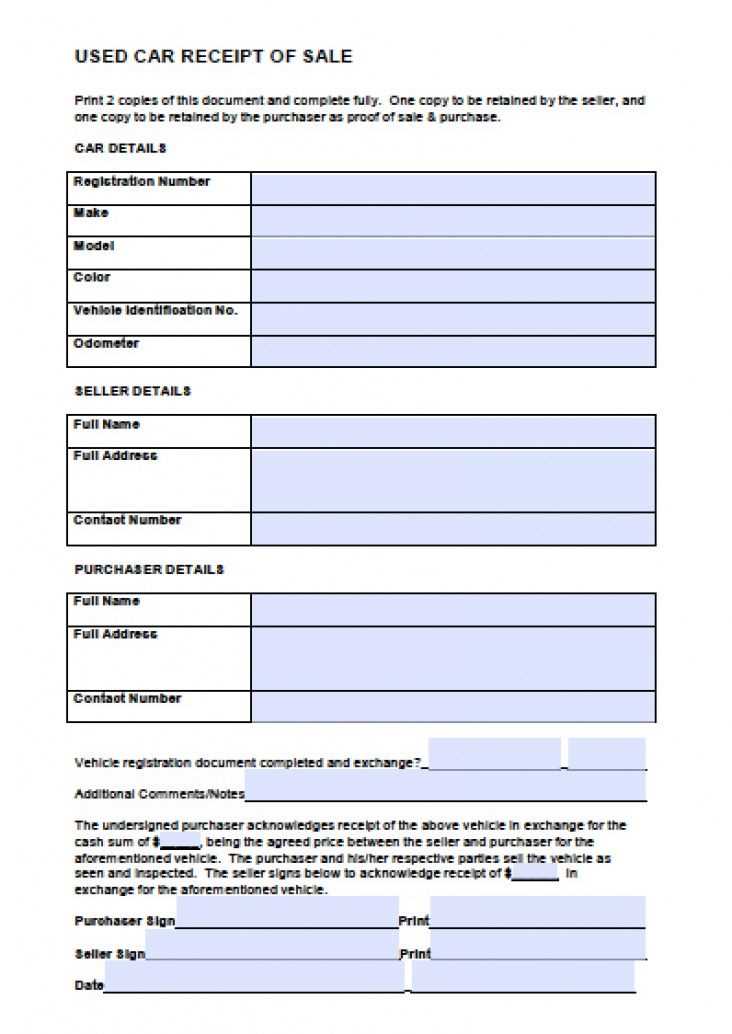
When selling a car privately, always provide a receipt for the transaction. This document protects both the buyer and the seller by outlining the details of the sale. A well-structured receipt prevents potential disputes and clarifies the terms agreed upon during the exchange.
Include specific information such as the car’s make, model, year, and Vehicle Identification Number (VIN). Also, list the sale price, payment method, and any additional terms agreed upon, such as warranties or conditions of sale. Both parties should sign the receipt to confirm the transaction.
Make sure the date of the sale is clear, and ensure all details match the car’s registration and title. Keep copies of the receipt for your records. If possible, it’s advisable to have a witness sign as well. This simple step will save you time and potential legal issues down the line.
Receipt Template for Private Car Sale

A receipt for a private car sale should clearly document the transaction details, protecting both the buyer and seller. Ensure the receipt includes the following elements:
1. Seller’s Information: Include the full name, address, and contact details of the seller.
2. Buyer’s Information: Include the full name, address, and contact details of the buyer.
3. Vehicle Details: Provide the vehicle’s make, model, year, color, Vehicle Identification Number (VIN), and odometer reading.
4. Transaction Amount: Clearly state the sale price of the vehicle and any deposits paid.
5. Payment Method: Specify how the payment was made (e.g., cash, bank transfer, check). If applicable, note the check number or bank transfer details.
6. Date of Sale: Include the exact date of the transaction to establish a timeline for the sale.
7. Signatures: Both the buyer and seller should sign the receipt. This indicates both parties agree to the sale details and terms.
8. “As Is” Clause: State clearly that the car is sold “as is,” with no warranties. This protects the seller from future claims.
9. Additional Terms (Optional): If any other conditions or agreements were made during the sale, include them here. For example, if the car has been sold with specific accessories or modifications, list those items.
Keep a copy of the signed receipt for your records, as it serves as legal documentation for the transaction.
How to Include Essential Car Sale Information

Make sure to list the car’s make, model, year, and VIN number. These details confirm the vehicle’s identity and prevent misunderstandings about the car being sold. Also, include the odometer reading to clarify the car’s mileage at the time of sale.
Clearly state the agreed sale price in both words and numbers. This avoids confusion and makes the transaction transparent. Additionally, mention whether taxes, fees, or other costs are included in the sale price or will be paid separately.
Include the condition of the car. Be specific about any existing damages, repairs, or modifications. This not only builds trust but protects both parties from potential disputes later.
Record the date of the sale. This marks the transfer of ownership and starts the clock for any warranties or return policies, if applicable.
If a deposit was made before the full payment, state this amount and whether it’s refundable or non-refundable. Be clear about the payment method as well, whether it is a bank transfer, check, or cash.
Both buyer and seller should sign the receipt, confirming the transaction details are accurate. Keep a copy for both parties for reference in case of future issues.
Steps to Document Payment Method and Amount

Clearly state the payment method used in the transaction. For example, specify whether the payment was made via cash, check, bank transfer, or another method. This helps to avoid any confusion later on.
Record the exact amount paid, and ensure it matches the agreed-upon price. Include both the total amount and any additional fees or taxes if applicable.
If the payment was made in installments, include the amount paid so far and any remaining balance. For clarity, specify the due date for future payments if needed.
Note any partial payments or deposits with corresponding amounts, along with their dates. This establishes a clear record of what has been paid and what is still owed.
If applicable, include a reference number for the payment method used (e.g., bank transfer number or check number). This makes it easier to trace the payment later on if necessary.
Lastly, both the buyer and seller should sign the receipt to confirm the payment details and protect both parties in case of disputes.
Adding Legal Clauses and Warranty Information

Ensure your receipt includes clear legal clauses to protect both parties. Start with a “Sold As Is” statement if no warranties are provided. This limits the seller’s liability for any defects after the sale.
- “As Is” Clause: Clearly state that the car is sold without warranties, guaranteeing that the buyer accepts the vehicle in its current condition. This clause prevents future claims for repairs or defects that were not disclosed.
- Title Transfer: Specify that the buyer is responsible for transferring the title and registration. Mention any local laws regarding the timing of this process.
- Payment Terms: Detail the agreed-upon payment method and the total price. Indicate if any deposits were made or if financing was arranged. Both parties should sign off on these terms.
- Odometer Disclosure: Include a statement confirming the vehicle’s odometer reading at the time of sale. This is important for verifying mileage and preventing odometer fraud.
- Liability Release: State that after the transaction is complete, the seller is no longer responsible for any accidents or incidents involving the vehicle.
If a warranty is included, outline the specifics. For example, include the duration, coverage, and any exclusions. Be specific about parts and services covered, such as powertrain or mechanical issues.
- Warranty Duration: Specify the length of the warranty in months or years.
- Covered Items: List which components are covered under the warranty, such as engine, transmission, or electrical systems.
- Exclusions: Be clear about exclusions, such as normal wear and tear, accidents, or misuse.
By adding these legal clauses and warranty details to your receipt, you ensure both parties are informed and protected throughout the process. Make sure both parties sign the document to confirm their agreement to the terms outlined.


